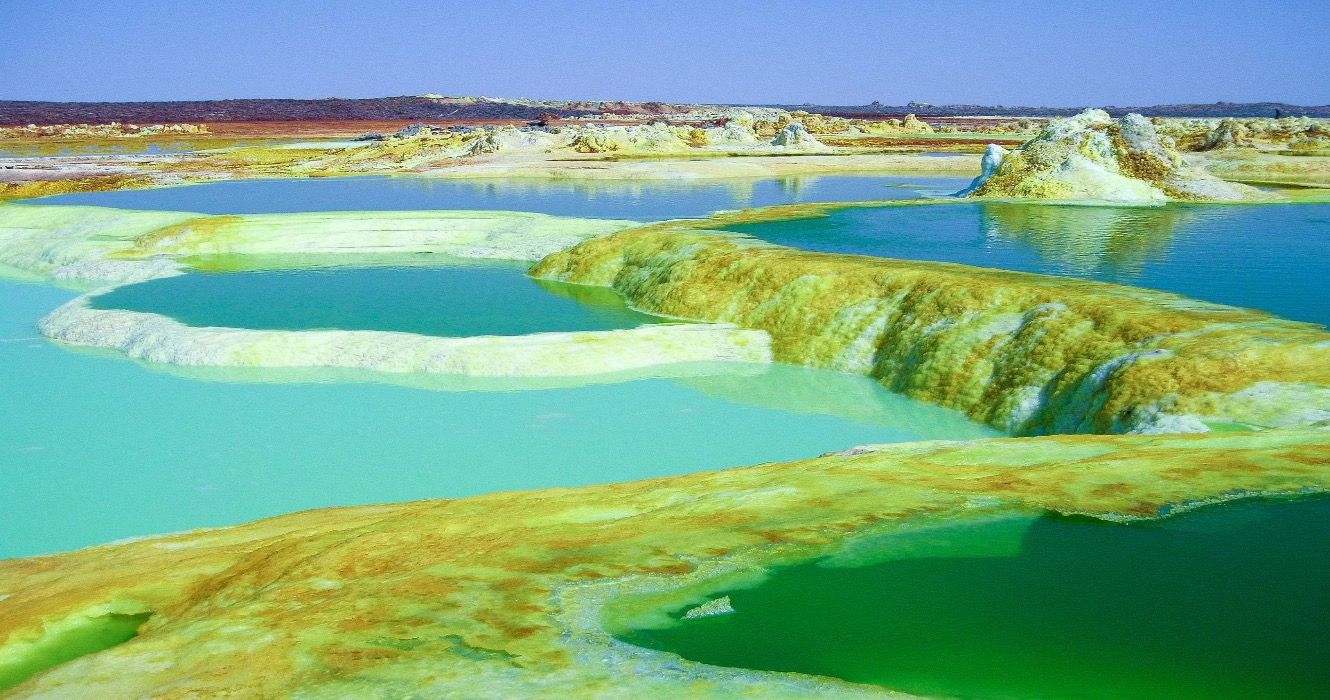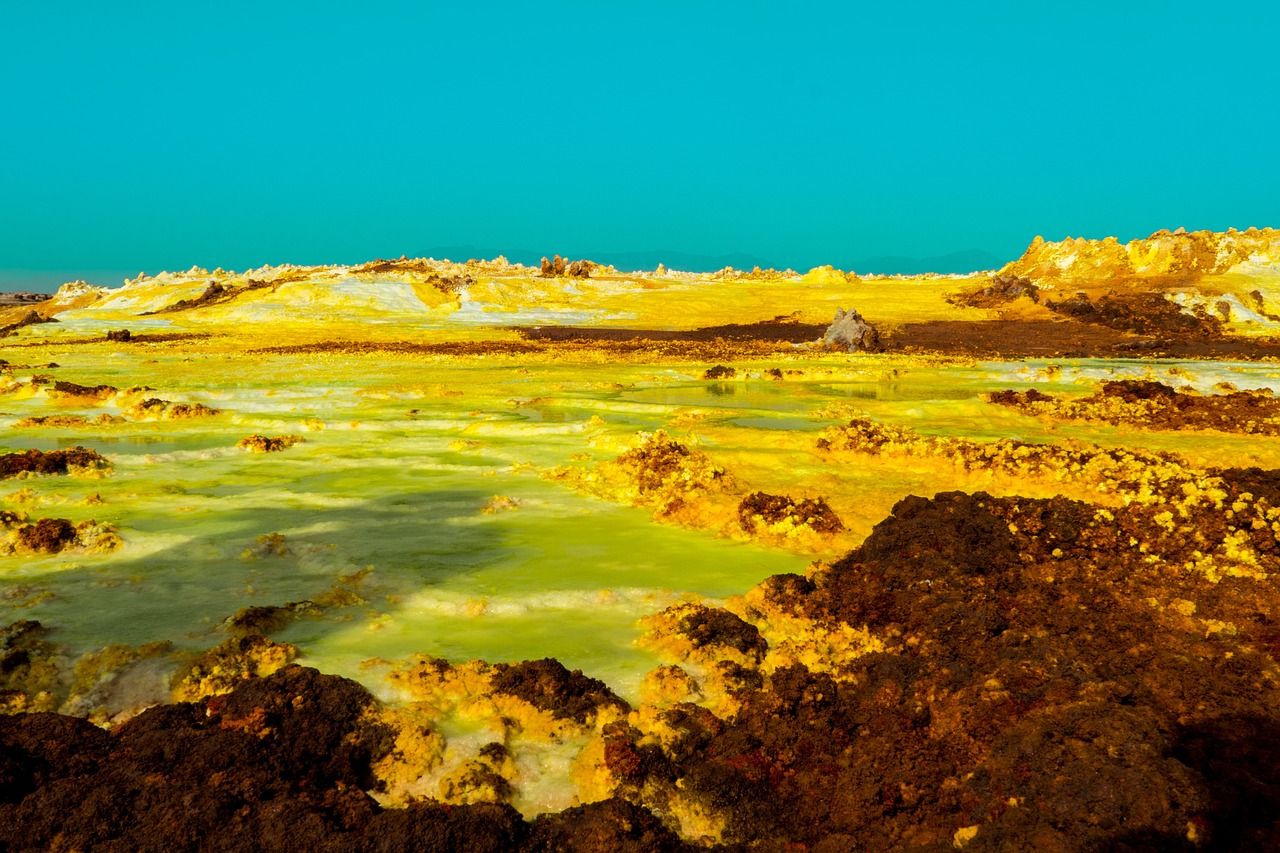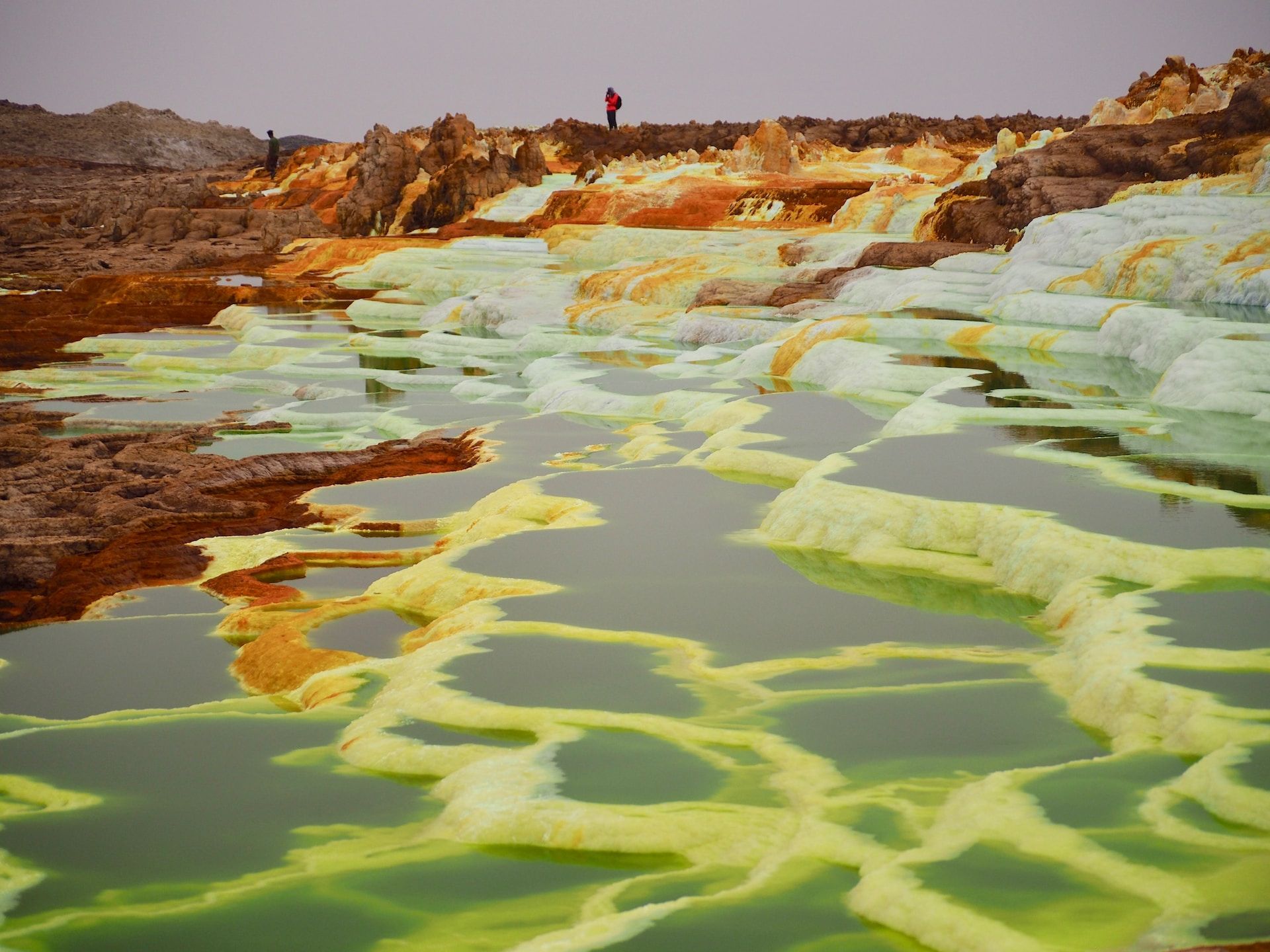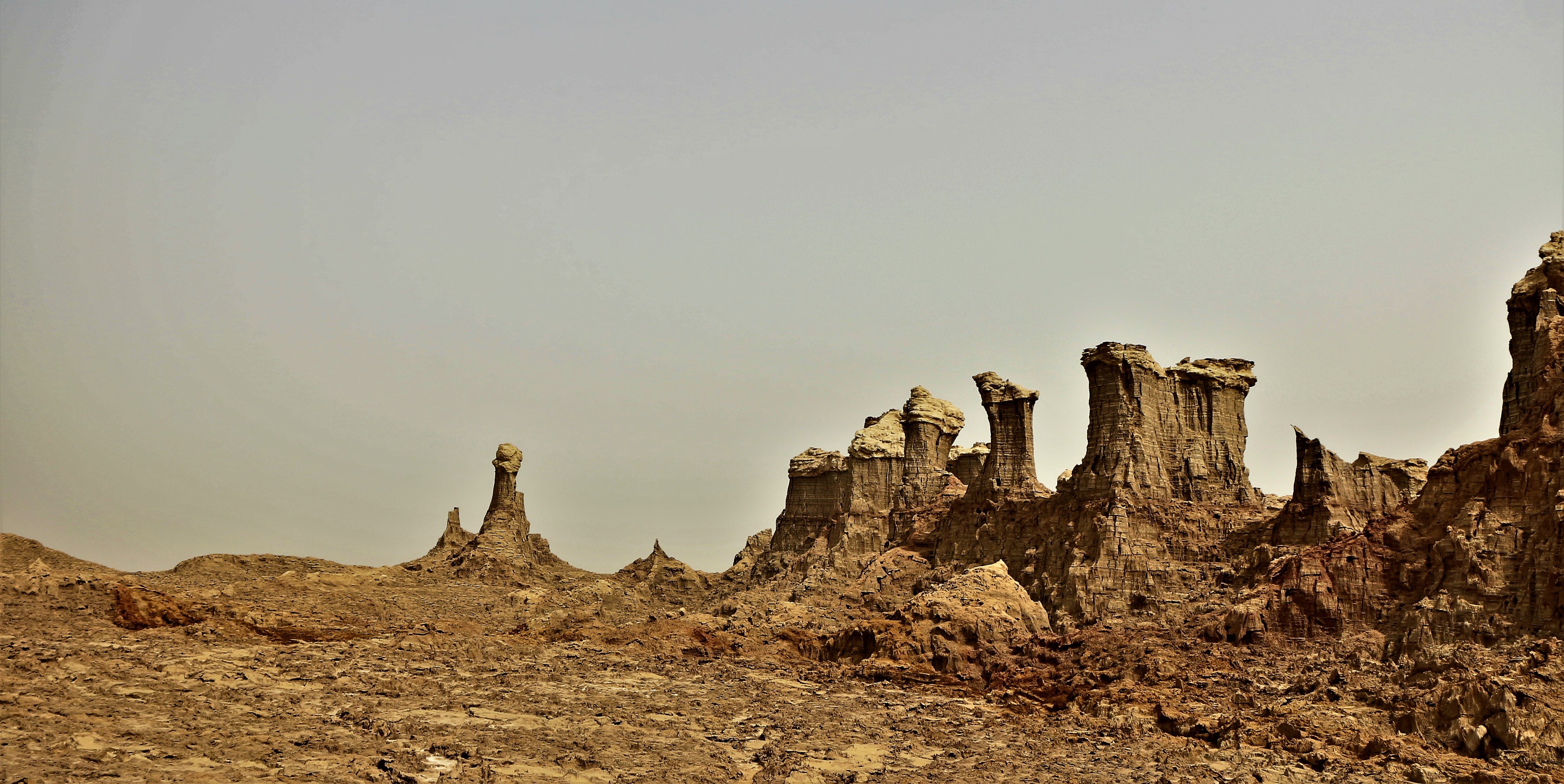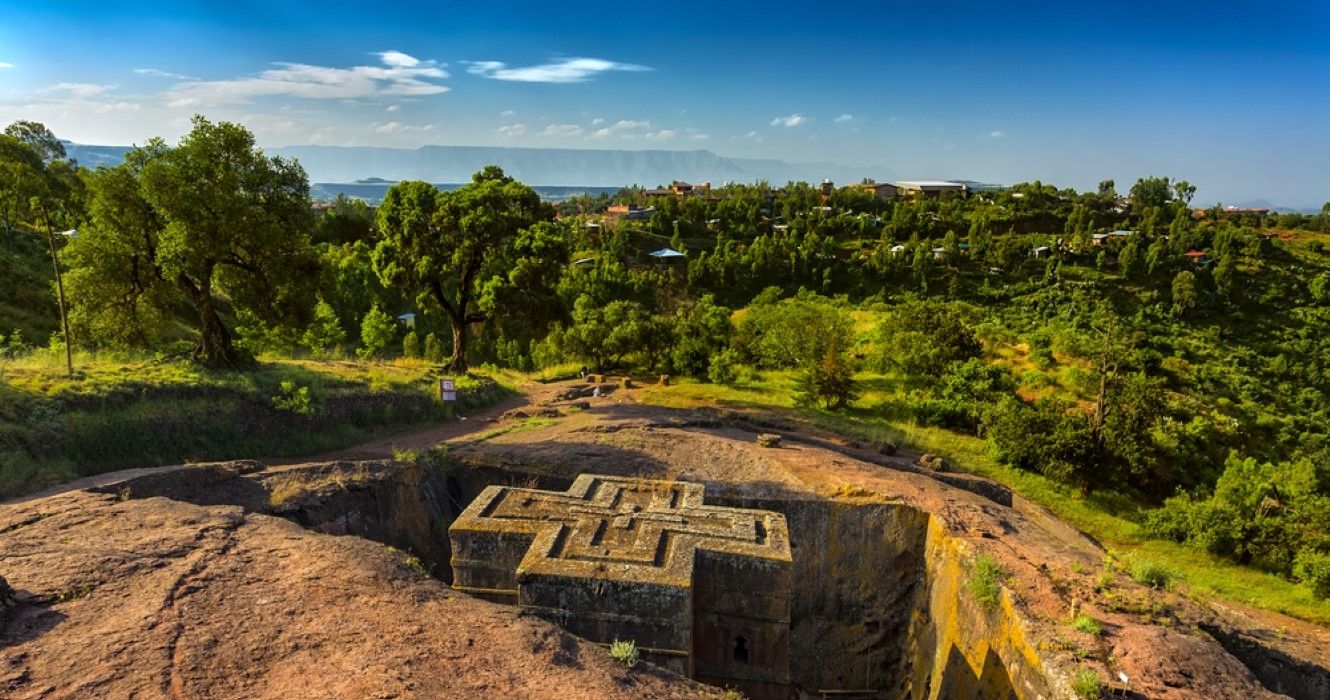Read update
- More Facts About The Danakil Depression
Summary
- The Danakil Depression in Ethiopia is a unique and fascinating geological feature, known for its extreme temperatures and potential as the cradle of humanity.
- The Depression is located in the Afar Region, close to the border with Eritrea, and is formed by three tectonic plates diverging in the Horn of Africa.
- Despite its natural wonders, the Danakil Depression is currently in a state of civil war, and travelers are advised to prioritize their safety and monitor the situation before planning a visit.
Ethiopia is a country often forgotten about or glossed over, but it has some of Africa's most stunning scenery and is definitely worth a visit. The Danakil Depression is one of the world's most interesting geological features. It is one of the many unique destinations in Ethiopia worth visiting.
The Danakil Depression is located in the Afar Depression - also known as the Afar Triangle. This depression is around 410 feet below sea level (more than Death Valley, which reaches 282 feet below). It should be noted that at the time of writing in 2021, the northern regions of Ethiopia are in a state of civil war, so caution is advised if traveling to the country. The situation is fluid and can change.
UPDATE: 2023/08/07 20:58 EST BY AARON SPRAY
More Facts About The Danakil Depression
This article was updated to include more facts about the Danakil Depression and more current information about the security situation. Unfortunately, as of August 2023, Ethiopia remains unstable - and especially the Afar region around the Danakil Depression remains an area of conflict. Be safe, and stay cool here!
What To Know About The Danakil Depression
The Danakil Depression is located in the north of Ethiopia, and it is a plain spanning around 124 miles by 31 miles. It is in the Afar Region of Ethiopia and is located close to the border with neighboring Eritrea (which gained independence from Ethiopia). Africa and Asia are gradually moving apart - as is the Horn of Africa. The Danakil Depression is the site of a massive depression formed from three tectonic plates diverging in the Horn of Africa.
- Size: Approx. 200 by 50 km (124 by 31 mi)
In time (like in around 10 million years if one can wait that long), erosion and the Red Sea will breach the highland around the Afar Depression. This will flood the valley and connect it to the sea. This will create a new ocean basin that will be as large as the Red Sea itself. Eventually, the Horn of Africa and the Somali plate will rift and separate away from the rest of Africa as the continent loses its Horn.
Africa Is Also Moving North, And Eventually, The Mediterranean Sea Will Be Lifting Into A Mountain Range
- World Record: Hottest Place On Earth
Besides the fascinating geographic aspect of the Depression. It is also known as the cradle of humanity (the jury is actually still out on this, though), and it was the site of the famous Australopithecus fossil, "Lucy," in 1974. In addition to this amazing find, paleontologists have since found many other fossils of ancient hominins in the Depression. Also, Lucy is no longer believed to be in our direct lineage as first thought.
- Fun Fact: Lucy Was Named After The Beetle's Song Lucy In The Sky With Diamonds That Was Playing At The Time Of The Discovery
The Danakil Depression Is One Of The Most Extreme Places On Earth
The Danakil Depression's wonders don't stop at being the site of a future sea and the *possible* cradle of humanity. It is also the hottest place on Earth. That is in terms of its average year-round temperature - so it might be bad if tourists forget their sun hat and a bottle of water. The depression is fed by the Awash River. However, it is not enough to fill the depression. Instead, it creates a chain of salt lakes, and the water just evaporates.
If Traveling To Ethiopia, Bring A Sweater. Despite Being Close To The Equator And Having The Hottest Region On Earth, Much Of The Country Is Of High Elevation, And It Gets Cold
Around the depression are also two volcanoes, namely Mount Ayalu and Mout Erta Ale (the latter volcano is active and boasts one of the few crater lakes of molten lava.
- Visa Requirement Of Ethiopia: E-visa For Almost The Whole World (Must Fly Into The International Airport At Addis Abba)
The environment is so extreme it is studied as a proxy for how life could evolve on other planets.
What Else To See & Do In The Danakil Depression
Hot springs are found in this scorching desert and depression of lakes of lava and the world's highest average temperatures. Around the world, tourists love jumping into the warm and soothing waters of natural thermal springs. But in this baking world, that is probably the last thing on people's minds. These are centered on the hydrothermal systems of Yellow Lake and Dallol.
Gaet'ale Pond:
- World Record: Saltiest Lake
- Salinity: 43%
- Formed: 2005
This depression gets to break at least one more world record. That of the saltiest lake on earth. The Gaet'ale Pond has an incredible salinity of 43%. It is one of the youngest world record setters, as it was only created in 2005 after an earthquake in the region.
The best way to explore the region is with a guided tour (guided tours are also required to access many parts of Ethiopia). Brilliant Ethiopia is offering two-day tours of the Danakil Depression for $400.00.
Put The Danakil Depression On The Backburner For Now
The Danakil Depression and the wider Afar Depression (of which it is a part) are certainly one of the most extreme places on earth. As such, it is a risky place to visit. The ever-present risks are that of heat exhaustion and dehydration. Those risks have been coupled with the civil war in the neighboring Tigray region. Tourists to this region must always be prepared for breakdowns and have plenty of water (bring a cooler; otherwise, the water will be beyond tepid or warm!).
Currently, there is an armed struggle between the central government and the Tigray autonomous region. This conflict could easily spill over into the Afar region, so tourists are cautioned to get the lasted travel advice from the Department of State before visiting this extreme wonderland.
There are plenty of other stunning attractions to see while in Ethiopia. These range from the remarkable Gelada Monkeys of the highlands to the eye-catching cut-cut churches of Lalibela.

